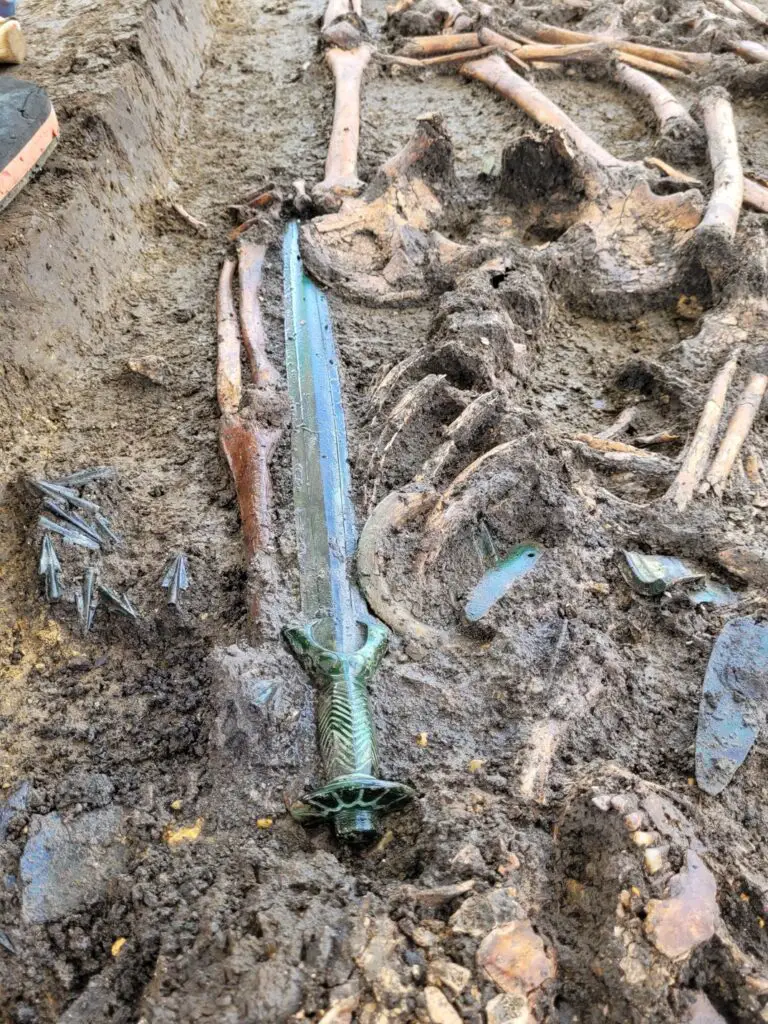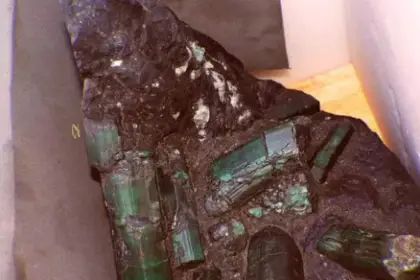Last week, archaeologists excavating a gravesite in the southern Bavarian town of Nördlingen were greeted by an uncommon spectacle—a 3,000-year-old sword nestled alongside the grave’s occupants.
Surprisingly, the weapon has defied the passage of time, retaining an exceptional state of preservation. Described as “almost still shining” by Bavaria’s State Office for Monument Protection, the sword’s bronze hilt boasts a unique octagonal design. Crafting such a hilt directly over the blade was a rare skill possessed by only a few accomplished smiths of that era. Historical records indicate that swords of this kind were predominantly produced in two regions: one near the excavation site in southern Germany, and the other spanning northern Germany and Denmark.
While the sword exhibits no signs of wear typically associated with battle usage, archaeologists assert that its center of gravity renders it suitable for practical combat, capable of inflicting slashing attacks on adversaries, as reported by Jess Thomson of Newsweek.
Bronze swords first emerged around 1600 B.C.E. and remained in use until approximately 600 C.E., as documented by Alex Fox in Smithsonian magazine. The Bavarian artifact, however, dates back to the late 14th century B.C.E.
These swords are exceedingly rare, primarily due to the looting of many middle Bronze Age graves over the course of centuries, according to experts cited in Live Science.

The octagonal hilt was cast directly over the blade of the sword, something only certain smiths were skilled enough to do. Archäologie-Büro Dr. Woidich / Sergiu Tifui
Past excavations across Europe have also yielded Bronze Age swords within burial sites, including a finely adorned bronze sword featuring an ivory and gold hilt, discovered during a 2015 dig in Greece.
Historians have long debated whether these bronze blades served ceremonial rather than practical purposes on the battlefield, given the malleable nature of the material. In fact, researchers conducted sword fights in recent years to gain insight into how Bronze Age weapons could have been effectively employed in combat, despite their susceptibility to damage and greater difficulty in repair when compared to their iron successors.
The recently unearthed sword was accompanied by an array of Bronze Age artifacts and the remains of three individuals—a man, a woman, and a child—all interred during the same era. The relationship between the three individuals remains unknown, leaving archaeologists with questions yet to be answered.

The sword was buried near the remains of a man, woman and child.
“The sword and the burial require further examination by our archaeologists to provide a more precise classification of this discovery,” stated Mathias Pfeil, the head of the monument protection office, in an official statement.
Nevertheless, researchers emphasize that the sword’s remarkable condition is truly extraordinary, remarking that a find of this nature is exceptionally rare.





